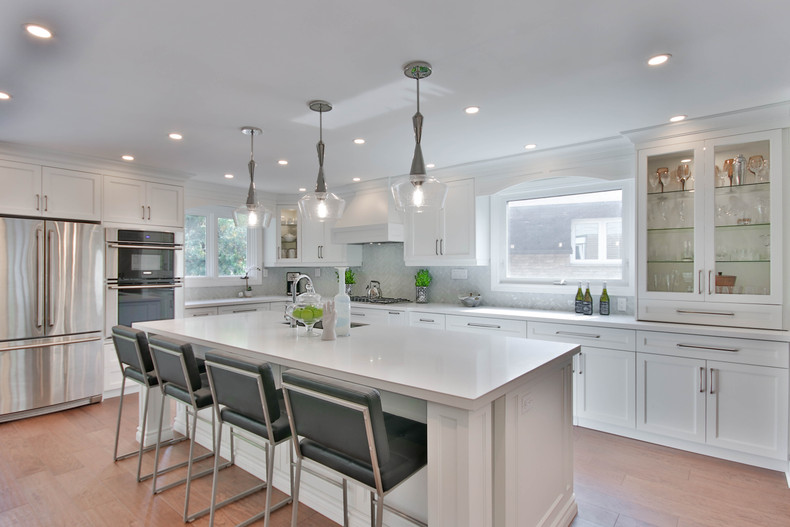Vital Elements to Consider When Picking Legs For Kitchen Area Island
Choosing the suitable legs for a cooking area island includes a mindful assessment of numerous factors that can considerably affect both performance and visual appeal. As we check out these components, it ends up being clear that each decision can have significant ramifications for the general kitchen area experience.
Material Options
When picking legs for a kitchen area island, comprehending the various product alternatives is crucial for accomplishing both visual appeal and architectural honesty (Legs For Kitchen Island). The selection of product considerably affects not only the longevity of the island yet likewise its total style and capability
Steel legs, commonly made from stainless steel or wrought iron, contribute a modern and commercial feel while ensuring toughness and security. These products are resistant to put on and can sustain substantial weight, making them excellent for bigger islands.
An additional alternative is crafted materials, like MDF or plywood, which can be more economical while still offering a variety of finishes. They might not provide the exact same level of stability as solid timber or metal. Legs For Kitchen Island. Finally, products such as acrylic or glass can create a modern look, though they might require additional support to make sure security.
Inevitably, the option of product for kitchen island legs should align with the desired performance and the overall theme of the cooking area.
Design and Style

When taking into consideration style, the shape and coating of the legs are vital. Conical legs can offer a sense of agility and style, while thicker, more robust legs can communicate stamina and stability. In addition, the surface-- be it repainted, tarnished, or all-natural-- need to enhance the cabinetry and kitchen counter products to develop a unified appearance.
Furthermore, the style of the legs can likewise mirror personal taste. Custom-made or attractive legs, such as those featuring complex makings or special geometric shapes, can offer as centerpieces, including personality and personality to the cooking area. Ultimately, the appropriate choice will not just enhance capability however also raise the aesthetic allure, making the kitchen island a standout feature of the home.
Elevation Considerations
Selecting the appropriate height for kitchen island legs is vital, as it straight affects both functionality and convenience. The conventional height for a kitchen island normally visit this website varies from 36 to 42 inches, straightening with common counter top elevations.

It is likewise important to represent users' elevations and preferences. Personalizing the elevation can make certain a comfy experience for all household participants, making the cooking area island an extra satisfying and functional area.
Weight Assistance
Ensuring sufficient weight support for cooking area island legs is important for both safety and capability. The kitchen island frequently serves multiple functions, consisting of food preparation, dining, and added storage, demanding a robust assistance framework. When selecting legs, it is essential to take into consideration the total weight capacity needed based upon the island's planned use and the materials that will certainly be positioned on it.
The choice of product for the legs plays a substantial duty in their weight-bearing capacities. Strong wood, metal, and heavy-duty compounds usually offer remarkable strength compared to lighter materials. In addition, the layout of the legs-- whether they are directly, tapered, or have a pedestal form-- can influence their capacity to disperse weight successfully throughout the framework.
Always seek advice from the supplier's specs regarding lots restrictions to make certain that the legs can sustain the desired weight without jeopardizing safety and security. In summary, picking kitchen area island legs with appropriate weight support is essential for producing a secure and functional culinary space.
Setup and Upkeep
Proper setup and maintenance of kitchen island legs are important for ensuring longevity and security. This typically involves protecting the legs to the island base making use of ideal fasteners, making sure that the legs are degree and straightened.
When set up, routine upkeep is necessary to protect the honesty and look of the legs - Legs For Kitchen Island. For wooden legs, routine cleaning with a moist cloth and application of ideal timber gloss can avoid wetness damages and keep their finish. Metal legs might require a mild cleaning service to get rid of grease and grime, adhered to by a completely dry towel to stop rust formation
Furthermore, evaluate the legs routinely for indicators of wear or damages, such as fractures or loose joints. Tightening screws or bolts as needed can additionally prolong the life expectancy of the legs. By adhering to these installation and maintenance methods, property owners can guarantee that their kitchen island continues to be tough and aesthetically appealing for several years to come.
Verdict

Visual comprehensibility is paramount in picking the style and design of legs for a cooking area island, as these aspects significantly influence the general ambiance of the space. Tapered legs can offer a feeling of lightness and beauty, while thicker, much more durable legs can convey stamina and stability.Selecting the ideal elevation for kitchen area island legs is crucial, as it directly influences both capability and comfort. In summary, picking kitchen area island legs with adequate weight assistance is necessary for creating a useful and safe culinary space.
In useful content verdict, picking legs for a kitchen island requires cautious factor to consider of numerous elements, consisting of material alternatives, design, elevation, weight support, and installation.